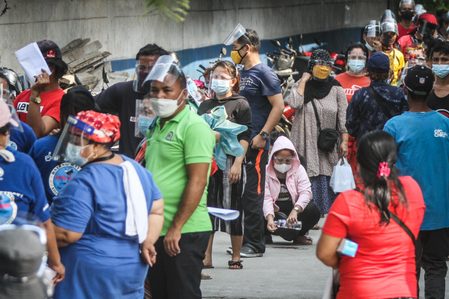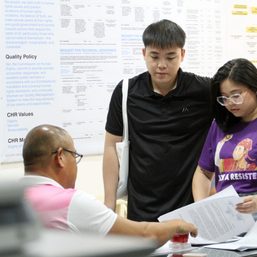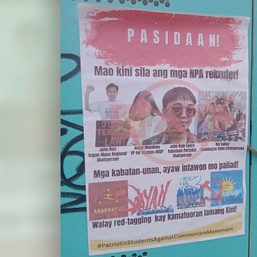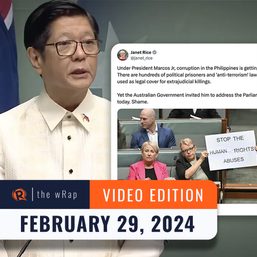SUMMARY
This is AI generated summarization, which may have errors. For context, always refer to the full article.
![[ANALYSIS] Two options for community pantries](https://www.rappler.com/tachyon/2021/04/community-pantry-sq.jpg)
The community pantry movement in the Philippines has picked up steam, and the response from the public has been quite positive. Some officials of the executive branch, however, seem to think that the best response to this act of bayanihan (mutual aid) is to call the organizers communist and insinuate that they have mysterious ulterior motives. There are certainly better responses than this, and community pantries may offer a unique tool for alleviating some of the unique challenges posed by the pandemic. The key is to understand how they operate within a broader economic context.
One can think of society as a table that stands on three legs. The first of these legs is the market. Markets function well when prices reflect consumers’ willingness to pay, and the producers’ willingness to sell. That is, supply equals demand. The problem is, there are situations where the price system simply does not reflect either. For example, insofar as we can think of disease-mitigating behavior (e.g. staying at home) as goods, citizens that do so should be compensated for their actions. After all, we have much to gain by limiting the spread of the disease.
This is a markets failure arising during the pandemic. We would like people to undertake disease-mitigating behavior but not everyone will get paid to do so. Those who have jobs that rely on in-person interactions have likely lost them. In this case, they will find ways to ensure their survival by moving about and looking for work or other remunerative activity.
In the case of a market failure, the second leg can help prop up the table – the state. Ideally, the state should step in by using penalties (fines, imprisonment) or monetary transfers (ayuda) to ensure disease-mitigating behavior, however imperfectly. The government, after all, has had past successes in distributing relief goods through the DSWD and other agencies.
However, the state’s efforts rely on its power to coordinate several factors such as information about people’s needs, and the capacity of local government units. If it cannot do this effectively, then we have a state failure. In this case, the third leg can support the other two – civil society.
Like markets, civil society arises out of the capacity of people for spontaneous self-organization. Again, think of the community pantries. There are a variety of reasons why people give to community pantries – social solidarity, affirmation for their generosity, even building social capital. The unique power of civil society is that it channels these private motivations toward socially desirable outcomes even without monetary reward. This is precisely what we observe from the community pantries. They have spontaneously directed a variety of individuals, churches, unions, and other groups to bring relief to those in need.
While these three legs have compensating functions, they can also enhance each other. Markets, for example, function better with laws and institutions that ensure property rights and stability. The state, meanwhile, has on numerous occasions partnered with civil society groups such as churches and private schools to spread information about social and medical programs. If so, policymakers can treat community pantries as partners that successfully harness the pro-social energies of the public.
Two options
First, policymakers can leave them alone. The motivation of community pantry organizers are irrelevant. They are performing a needed service, and, if they are as organized as their detractors suggest, they will find the best way to deliver these services to their community members. If not, they will get adequate feedback since they have direct contact with people they serve. By leaving them alone, the state ensures that community pantries continue to encourage mutual aid and serve a desirable social function.
Second, deputize them to make both pandemic relief and recovery easier. There are numerous options for directly partnering with community pantries. For example, it has been common to talk about enhancing the livelihoods of farmers by ensuring that they have buyers for their produce. The government can then channel funds to buy surplus produce from farmers and sell it to community pantries at a subsidized price. In this way the post-pandemic recovery for the agricultural sector will be less painful, while those who need food can obtain it. Such a policy ensures that the country’s farmers are in a better financial position while delivering relief today.
Whichever of these solutions policy-makers choose, enhancing relief distribution and increasing the amount of money given to households will improve the government’s performance in addressing the pandemic. Thus, the proposal of senators Villanueva, Gatchalian, and others to defund NTF-ELCAC and transfer the funds toward social programs is a step in the right direction. The key is to realize that community pantries are an opportunity for a state-civil society partnership rather than a conflict. – Rappler.com
Alfredo R.M. Rosete, PhD, is an Assistant Professor of Economics at Central Connecticut State University.
Add a comment
How does this make you feel?

![[OPINION] Filipinos, unite to defend our community pantries!](https://www.rappler.com/tachyon/2021/04/TL-defend-community-pantries-1280.jpg?fit=449%2C449)
![[ANALYSIS] Divert red-tagging funds to community pantries](https://www.rappler.com/tachyon/2021/04/TL-Community-pantries-April-23-2021.jpg?fit=449%2C449)

![[Newsstand] The Marcoses’ three-body problem](https://www.rappler.com/tachyon/2024/04/tl-marcoses-3-body-problem.jpg?resize=257%2C257&crop=451px%2C0px%2C1080px%2C1080px)
![[Edgewise] Preface to ‘A Fortunate Country,’ a social idealist novel](https://www.rappler.com/tachyon/2024/02/a-fortunate-country-february-8-2024.jpg?resize=257%2C257&crop_strategy=attention)
![[New School] When barangays lose their purpose](https://www.rappler.com/tachyon/2024/02/new-school-barangay.jpg?resize=257%2C257&crop=414px%2C0px%2C1080px%2C1080px)





![[OPINION] Jhed and Jonila’s fight for justice](https://www.rappler.com/tachyon/2024/02/TL-jhed-and-jonilla.jpg?resize=257%2C257&crop=411px%2C0px%2C1080px%2C1080px)
There are no comments yet. Add your comment to start the conversation.